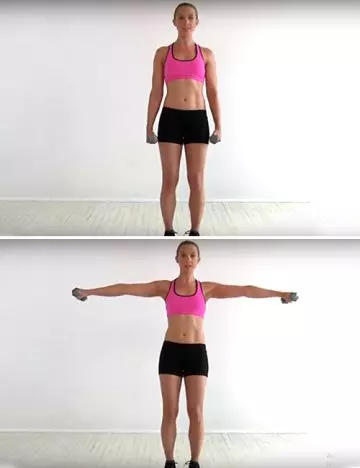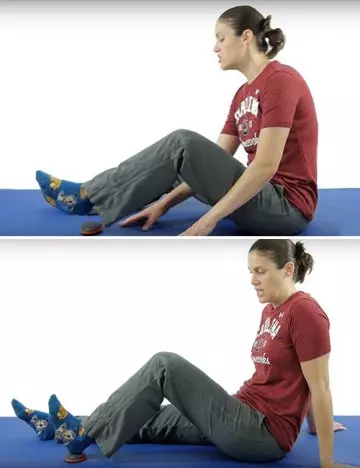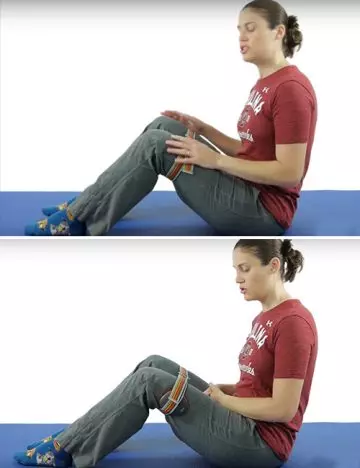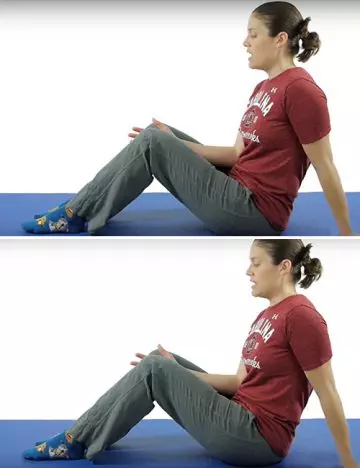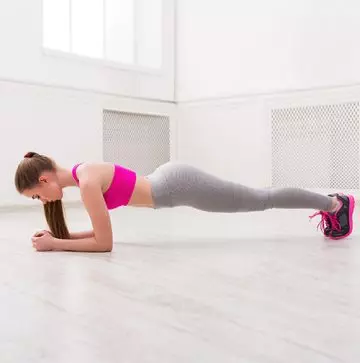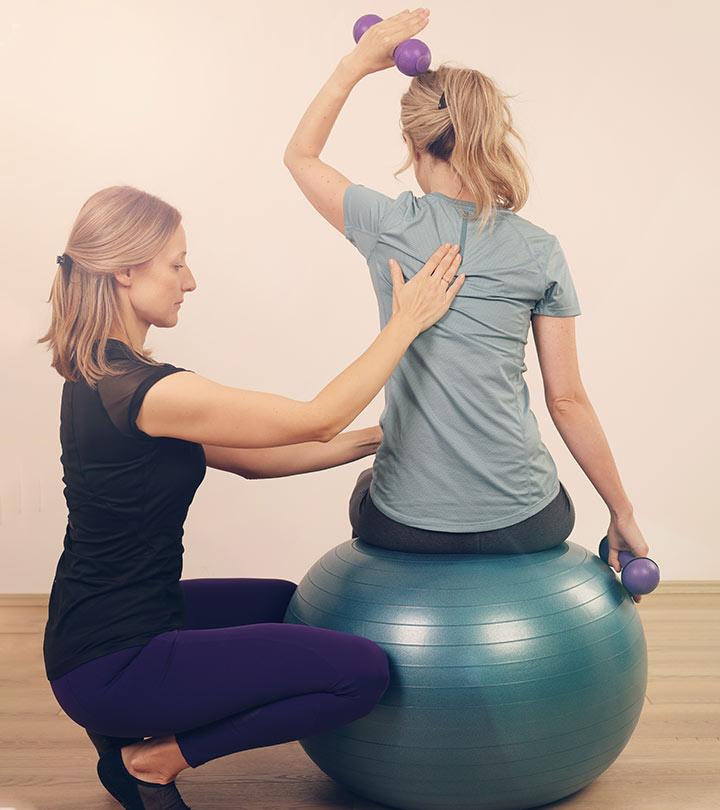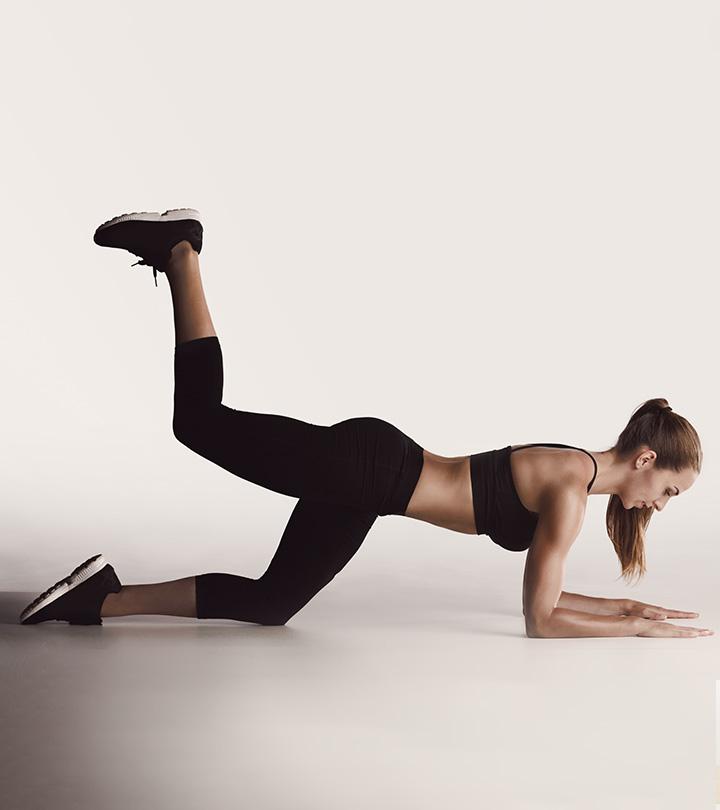13 Isometric Exercises For Full Body Strength Training
Build muscles and burn more calories with static and self-resistance workouts.
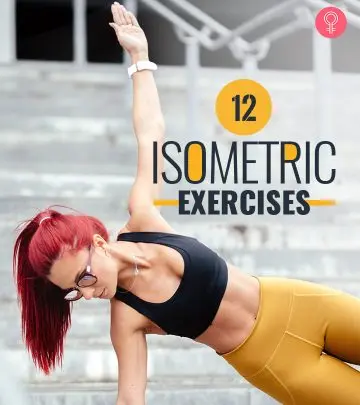
Image: Shutterstock
If you want to burn calories without moving your muscles much, there is a way out – isometric exercises. What is an isometric exercise? Here is an example. Bring your palms together and force them against each other. You experience tension in your shoulders, chest, and arm. In other words, it acts as a tension exercises It is as simple as that, and there are many ways to do it.
There is hardly any movement, but the target is contracted and activated. These exercises are perfect for building strength and burning 2 to 5 calories a minute. They are a godsend for people with shoulder and/or knee injuries and may even help reduce blood pressure (1), (2), (3).
In this article, we look at the nine best isometric exercises to do at the gym or at home, how to do them, their benefits, and more. Let’s get started!
 Workout Blueprint: Isometric Exercises
Workout Blueprint: Isometric Exercises- Frequency: Daily
- Benefits: Boost strength, posture, muscle tone, and heart health.
- Equipment Needed: Chair, towel, dumbbell, exercise ball, resistance band, mat.
- Space Required: Small area
- Assistance Required: No
- Who Should Avoid: Anyone with high blood pressure and a history of back pain, spine problems, or other bone conditions.
In This Article
What Is Isometric Exercise?
Isometric exercise is a static strength training exercise. It activates or contracts the muscles without visible movement of the body. These exercises use self-resistance instead of weights/resistance bands to contract the muscle fibers (4). Hence, they can also be called resistance band exercises.
Isometric exercises are popularly practiced by physiotherapists for rehabilitation. They also reduce muscle fatigue, neck pain, and blood pressure and improve flexibility, core strength, and walking speed in elderly people (5), (6), (7), (8), (9). Let’s take a look at a few examples of isometric exercises below.
13 Examples Of Isometric Exercises
Before we begin with the isometric exercise examples, here’s the golden rule for performing these exercises:
Golden Rule: Squeeze your muscle fiber, take a deep breath, perfect your posture, hold it, and release.
 Quick Tip
Quick Tip1. Isometric Shoulder Internal Rotation

Muscles Activated – Subscapularis, pectoralis, and deltoids.
How To Do
- Roll a small towel and
- keep it between your right elbow and the area near the lower rib cage.
- Put your left hand against your right palm/fist.
- Push your right fist inwards or towards your body. Simultaneously, push your lift palm to resist the inward movement of your right fist.
- Hold it for 3 seconds and relax. Do it 10 times, twice a day.
- If you have an injury, do not exert too much pressure.
2. Isometric Shoulder External Rotation
Muscles Activated – Subscapularis, pectoralis, and deltoids.
How To Do
- Roll a small towel and place it
- between your right elbow and the area near the lower rib cage.
- Place your left hand against the outside of your right fist.
- Push your right fist outwards or away from your body. At the same time, push your lift palm inside to resist the outward movement of your right fist.
- Hold it for 3 seconds and relax. Do it 10 times, twice a day.
- If you have an injury, do not exert too much pressure.
3. Isometric Lateral Raise
Muscles Activated – Deltoids, serratus anterior, upper traps, and supraspinatus.
How To Do
- Stand straight with the legs shoulder-width apart.
- Hold a dumbbell in each hand, and roll your shoulders back.
- Raise both your hands to the shoulder level.
- Hold this pose keeping your core engaged for 30 seconds.
4. Isometric Lying Leg Raise
Muscles Activated – Hamstrings, quads, and abductors.
How To Do
- Lie down on your right side.
- Place your left hand on your waist. Bend your right elbow, and place it below your right shoulder to support your body. Place your right forearm on the floor.
- Lift your left leg. Hold for 3 – 5 seconds and release.
- Do 2 sets of 8 reps on each side.
5. Isometric Quad Exercise
Muscles Activated – Quadriceps
How To Do
- Sit on a mat with your legs extended forward.
- Place a towel roll or a noodle under your right knee.
- Place both palms at the back on the mat for support.
- Press your knee down on the towel roll or noodle.
- Hold for 3 seconds and release.
- Do 10 times before switching legs.
6. Isometric Hamstring Exercise
Muscles Activated – Hamstrings, quads, and calves.
How To Do
- Sit on a mat with your right knee bent and left leg extended forward.
- Place a towel roll or a pressure measuring equipment under your right heel.
- Place both your palms at the back on the mat for support.
- Press your knee down on the towel roll or the equipment.
- Hold for 3 seconds and release.
- Do 10 times before switching legs.
7. Isometric Ball Squat
Muscles Activated – Quads, hamstrings, and glutes.
How To Do
- Place a gym ball between your lower back and a wall.
- Slowly walk forward to get into a squat pose. The ball will roll up to your mid-back.
- Hold this pose for 10 seconds. Keep breathing.
- Do 6 times.
- Avoid it if you are recovering from an injury.
8. Isometric Hip Abduction
Muscles Activated – Abductors, hamstrings, and quads.
How To Do
- Sit on a mat and keep both the knees bent.
- Place a resistance band or a strap right above your knees.
- Push your thighs outwards.
- Hold it for 3 seconds and release.
- Do this 10-12 times.
9. Isometric Hip Adduction
Muscles Activated – Abductors, hamstrings, quads, and glutes.
How To Do
- Sit on a mat, with both the knees bent.
- Place your right hand between your knees and your left palm on the mat for support.
- Push your thighs inwards.
- Hold it for 3 seconds and release.
- Do this 10-12 times.
10. Plank Hold
Muscles Activated – Abs, glutes, lower back, chest, shoulders, and arms.
How To Do
- Kneel down. Bend your elbows, fist your hands, and place your forearms on the floor. Make sure your elbows are below your shoulders.
- Extend your legs behind, one at a time.
- Keep your hips, back, and neck in one line. Hold your core tight. Keep your shoulders relaxed and rolled back.
- Hold for 10-30 seconds.
- Do this 3 times.
11. Side Plank
Muscles Activated – Abs, glutes, lower back, chest, shoulders, and arms.
How To Do
- Kneel down. Place your palms on the mat. Keep your elbows below the shoulders. Extend your legs behind to get into a high plank position.
- Roll both your feet to the right, and as your core moves, take your right hand off the floor and extend it straight above. Look at your hand above.
- Hold this pose for 10-20 seconds before coming back to the high plank pose.
- Do it on the other side as well.
- Do 3 times.
12. Isometric Neck Exercise
Muscles Activated – Serratus, scapula, semispinalis capitis, splenius capitis, scalenes, traps, sternohyoid, sternocleidomastoid, omohyoid, and biceps.
How To Do
- Sit on a chair. Keep your back straight, shoulders rolled back, and chest up. You will do four isometric neck exercises.
- First exercise: Place both your palms on your forehead. Push your head forward and push your palms towards your head to resist movement. Hold it for 10 seconds.
- Second exercise: Place your hands behind your back. Push your head back and resist the movement with your hand pushing forward. Look up as you do so. Hold for 5-8 seconds before releasing it.
- Third exercise: Place your right palm on the right side of your head. Push your head towards your palm and your palm towards your head. Your head might tilt a little towards the right. Hold it for 5-8 seconds before releasing it.
- Fourth exercise: Place your right palm on the side of your right cheek. Rotate your head and look towards the right. But resist this movement with your palm. Hold for 5-8 seconds before releasing.
- Repeat all the exercises 3 times on each side.
13. Split Squats
Muscles Activated – Quadriceps, hamstrings, glutes, calves, and core muscles
How To Do
- Stand up and keep your feet hip-width apart.
- Take a step forward with the right leg while the left leg remains behind you.
- Bend your knees and lower your body while keeping your hands on your hips.
- Keep the right leg at an angle of 90 degrees and the left knee just above the ground.
- Keep your core engaged and upright.
- Push through your front heel to return to the starting position.
- Perform 3 sets of 10-12 reps on each leg.
 Quick Tip
Quick TipThese exercises will help you get fit, but do they really add to your strength? Find out in the following section.
Are Isometric Exercises A Good Way To Build Strength?
Yes, isometric exercises help build muscle strength. They are used by physiotherapists to rehabilitate muscles, restore muscle strength, and speed up the recovery process. Additionally, you can pair bodyweight exercises (like calisthenics), plyometric exercises, and weightlifting with isometric exercises to achieve a full body workout and push your limits.
Apart from building muscle strength, toning, and injury recovery, here are a few more benefits of isometric exercises.
Benefits Of Isometric Exercise
- It helps strengthen the muscles.
- It improves muscle tone.
- Improves body posture and spine alignment.
- It helps recover from injuries.
- May help lower blood pressure.
- It helps reduce arthritis pain.
- May help improve heart function.
- Increases resistance power.
- It can be done anywhere and anytime.
- It does not require any equipment. At most, a set of dumbbells is enough.
- Good for the elderly with limited movement.
Lucas, a YouTuber, embarked on a week-long experiment training solely with isometric exercises. During this training period, he observed, “Just hanging for time which is a great isometric exercise to work the forearms, and as I’ve experienced the wrist thickness and strength, now something interesting that happened here was as fatigued as I thought I was ended up doing a dead hang for two whole minutes that’s 120 seconds (i).”
Infographic: Top 4 Isometric Exercises For Complete Body Strength Training
If vigorous exercise involving continuous movements is not your cup of tea, then no worries, we got you covered. Isometric workouts are a great way to reduce blood pressure, improve strength and flexibility, and reach your fitness goals stress-free. Check out the infographic below for the top 4 isometric exercises to help you get started on your fitness journey.

Illustration: StyleCraze Design Team
Now that we have covered all the basics and examples of “what is isometric exercise”, you can choose to include any of the above variations in your daily workout routine. These would not only help strengthen your muscles but also help burn calories. These exercises based on “self-resistance” and “static strength training” are mostly used in physiotherapy and other rehabilitative methods to improve the range of motion and aid faster recovery. Lunges, dumbbell exercises, kettlebell exercises, barbell exercises, and aerobic exercises can also be included in the workout session to improve overall body strength.
Frequently Asked Questions
What is an example of isometric exercise?
An easy example of isometric exercise is joining your palms together and pushing them against each other. There is no visible movement, but you feel the muscles contract in your biceps and shoulders. This, in turn, helps strengthen these muscles.
Is yoga an isometric exercise?
Yes, yoga is an isometric exercise. It helps strengthen and improve the flexibility of the muscles.
What are the best isometric exercises?
Here’s a list of a few good isometric exercises:
• Plank
• Side plank
• Wall squat or wall gym ball squat
• Isometric lateral raises
• Isometric leg raises
• Calf raise and hold
• Isometric neck exercises
• Isometric shoulder internal and external rotation
What are the benefits of isometric exercises?
• Isometric exercises improve muscle strength.
• Burn calories.
• Improve muscle tone.
• Help in injury recovery.
• Good for the elderly with limited movement and walking problems.
• May lower blood pressure.
• May improve heart health.
• Good for people with osteoarthritisi XA condition where the cartilage around joints starts degenerating (common in the joints of hands, hips, and knees). .
• Build core strength.
Are isometric exercises aerobici XCharacterized by the presence of oxygen, and the associated exercises improve the efficiency of the cardiovascular system in absorbing and transporting oxygen. or anaerobici XCharacterized by the absence of oxygen, and the associated exercises are fast and high-intensity that don't let the body use oxygen. ?
Isometric exercises are anaerobic.
Do isometric exercises raise blood pressure?
Yes, isometric exercises may also increase blood pressure. Talk to your doctor if you have high blood pressure before doing isometric exercises.
Can I do isometrics every day?
Yes, you can do isometrics every day. You can do isometric exercises with other workouts like high intensity interval training (HIIT) and circuit training.
How long should you rest between isometric exercises?
You can rest for 30-60 seconds between isometric exercises.
Are push-ups isometric?
No. In fact, push-ups are isotonic workouts that use your body weight as resistance to build your muscles while moving through a full range of motion.
What’s the difference between isometric and isotonic workouts?
Isometric workouts, such as planks, engage muscles with no movement. On the other hand, isotonic workouts, like squats, engage muscles while moving the joints and applying a fixed amount of weight.
Key Takeaways
- Isometric exercises involve contracting muscles without moving the joints.
- These exercises may increase strength, improve posture and balance, and enhance heart health.
- Isometric exercises are low-impact exercises suitable for people with joint problems and knee injuries.
- These exercises can be performed anywhere and do not require any equipment.
- Isometric lateral raise, isometric shoulder internal and external rotation, plank hold, and side plank are some of the best isometric exercises for a full-body workout.
References
Articles on StyleCraze are backed by verified information from peer-reviewed and academic research papers, reputed organizations, research institutions, and medical associations to ensure accuracy and relevance. Read our editorial policy to learn more.
- Chrysant, Steven G. “Current evidence on the hemodynamic and blood pressure effects of isometric exercise in normotensive and hypertensive persons.” The Journal of Clinical Hypertension 12.9 (2010): 721-726.
https://pubmed.ncbi.nlm.nih.gov/20883233 - Anwer, Shahnawaz, and Ahmad Alghadir. “Effect of isometric quadriceps exercise on muscle strength, pain, and function in patients with knee osteoarthritis: a randomized controlled study.” Journal of physical therapy science 26.5 (2014): 745-748.
https://www.ncbi.nlm.nih.gov/pmc/articles/PMC4047243/ - Carlson, Debra J., et al. “Isometric exercise training for blood pressure management: a systematic review and meta-analysis.” Mayo Clinic Proceedings. Vol. 89. No. 3. Elsevier, 2014.
https://pubmed.ncbi.nlm.nih.gov/24582191 - Kim, Mi-Kyoung, et al. “Effects of different types of exercise on muscle activity and balance control.” Journal of physical therapy science 27.6 (2015): 1875-1881.
https://www.ncbi.nlm.nih.gov/pmc/articles/PMC4500003/ - Mısırlıoğlu, Tuğçe Özekli, et al. “Does a core stabilization exercise program have a role on shoulder rehabilitation? A comparative study in young females.” Turkish Journal of Physical Medicine and Rehabilitation 64.4 (2018): 328.
https://www.ncbi.nlm.nih.gov/pmc/articles/PMC6648025/ - Kim, Nyeon-Jun, et al. “The effects of isometric trunk exercises and dynamic trunk exercises on gait in elderly people.” Journal of physical therapy science 27.6 (2015): 1685-1689.
https://www.ncbi.nlm.nih.gov/pmc/articles/PMC4499961/ - Khan, Muhammad, Rabail Rani Soomro, and Syed Shahzad Ali. “The effectiveness of isometric exercises as compared to general exercises in the management of chronic non-specific neck pain.” Pak J Pharm Sci 27.5 (2014): 1719-22.
https://pubmed.ncbi.nlm.nih.gov/25262525 - Wiley, Ronald L., et al. “Isometric exercise training lowers resting blood pressure.” Medicine and science in sports and exercise 24.7 (1992): 749-754.
https://pubmed.ncbi.nlm.nih.gov/1501558 - Rio, Ebonie, et al. “Isometric exercise induces analgesia and reduces inhibition in patellar tendinopathy.” British journal of sports medicine 49.19 (2015): 1277-1283.
https://pubmed.ncbi.nlm.nih.gov/25979840






